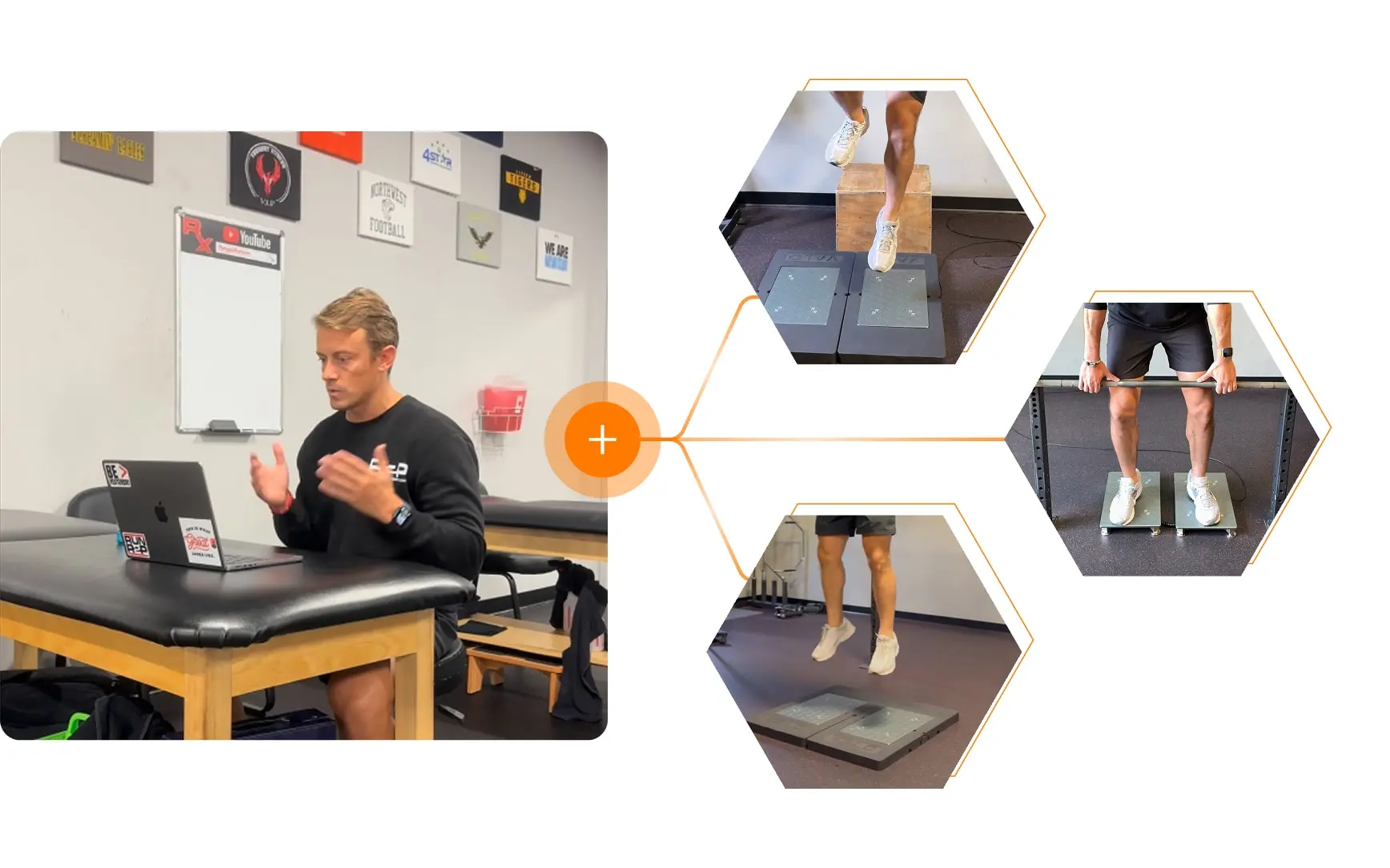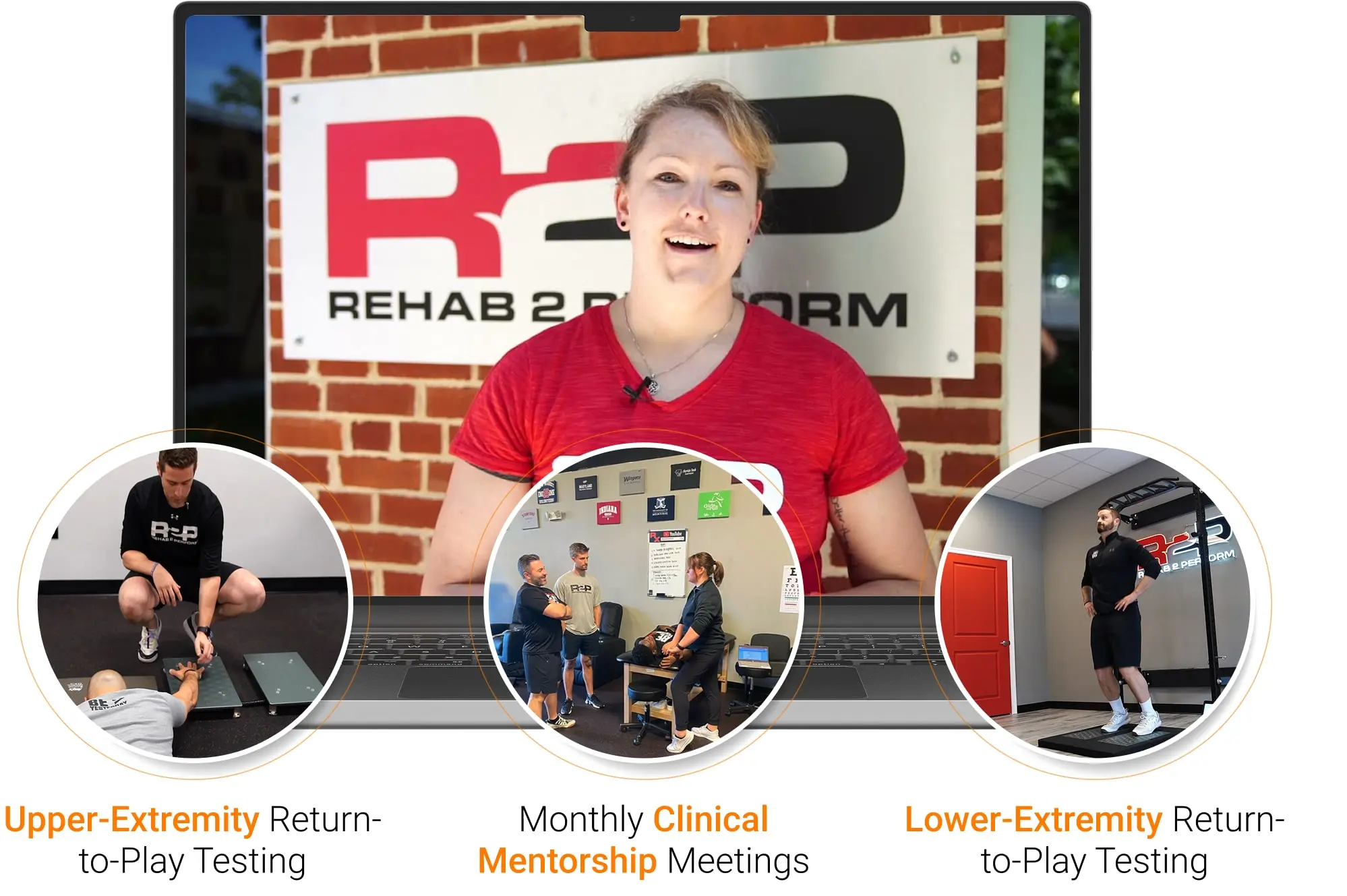Rehab 2 Perform: Scaling ForceDecks Application
Available in:
EN
Over the past several years, Rehab 2 Perform (R2P) has built a framework to bridge the gap between innovation and integration, with the help of Chief Clinical Officer Dr. Zach Baker. As Director of R2P’s Sports Residency Program, he oversees both academic and mentorship responsibilities while ensuring that systems such as ForceDecks enhance objective testing and are fully integrated into everyday clinical decision-making.
…R2P has built a framework to bridge the gap between innovation and integration…ensuring that [ForceDecks is]…integrated into everyday clinical decision-making.
As R2P expanded to 12 locations the team faced a unique challenge in its integration journey: building a scalable, repeatable model for implementing ForceDecks effectively across the entire organization.
Building a Foundation for Success
Successful implementation starts with structure. To improve technology adoption company-wide, an onboarding program was developed that gives every new clinician clarity and confidence in integrating technology. This onboarding program brought expertise together from every level of the organization, from new hires to the CEO.
This onboarding program brought expertise together from every level of the organization, from new hires to the CEO.

R2P CEO, Dr. Josh Funk, recording onboarding material for incoming staff.
The onboarding program blends asynchronous education with guided mentorship:
- Online learning modules introduce clinicians to R2P’s philosophy, workflow systems and testing technology, including detailed tutorials for ForceDecks setup and operation.
- One-on-one meetings with site directors during the first month allow clinicians to practice hands-on testing, refine techniques and discuss application to real cases.
- Follow-up sessions from weeks five to twelve reinforce interpretation skills and ensure data confidence.
Embedding both digital learning and in-person mentorship lays the foundation for consistent testing standards across all R2P clinics.
Creating Clarity Through Standardization
Instead of enforcing compliance around technology use, R2P built a culture driven by curiosity and understanding. This approach led to the development of an internal library of testing resources that clearly defines the purpose and process of each assessment. Each resource includes the following:
- Test outlines detailing purpose, rationale and clinical relevance
- Normative data and benchmarks derived from VALD Norms and published research
- Standardized procedures aligned with VALD Practitioner’s Guides and Knowledge Base protocols

As clinicians became more confident with ForceDecks, interest naturally shifted toward best-practice application and deeper clinical use.
As clinicians became more confident with ForceDecks, interest naturally shifted toward best-practice application and deeper clinical use. Practitioner’s Guides, particularly those on anterior cruciate ligament (ACL), hamstring and hip and groin management, became regular reference points in clinic discussions, guiding decision-making and shaping consistent application across R2P’s hero users.
Curating resources for learning allowed R2P clinicians to gain confidence and clarity in objective measurement to better guide treatment decisions.
From Competency to Mastery
To ensure ongoing growth and high-level clinical reasoning, R2P established monthly mentorship calls led by Dr. Corrie Jones, Director of Clinical Excellence. In the calls, Corrie covers a variety of sports rehab topics and routinely finds ways to integrate ForceDecks into the clinical decision-making algorithms and thought processes.
Discussion topics often cover areas such as:
- Return-to-sport testing for upper and lower extremities
- Return-to-run progression guided by objective criteria
- Load management and readiness tracking using testing data
These monthly meetings became a key driver in R2P’s education process, advancing clinician capability and confidence in using objective technology throughout rehab.

Dr. Corrie Jones directing monthly mentorship calls to upskill R2P clinicians.
This structure keeps ForceDecks relevant by applying technology-enabled assessments to complex clinical cases, helping clinicians gain better insights from data and translating them into action.
…applying technology-enabled assessments to complex clinical cases [helps] clinicians gain better insights from data and [translate] them into action.
The Ripple Effect
Structured implementation created ripple effects beyond data collection. As R2P scaled ForceDecks across all locations, the organization saw measurable cultural and operational benefits:
- Patient Outcomes: Objective data offered visible proof of progress, enhancing motivation and reinforcing clinician-patient trust.
- Staff Retention and Attraction: Clinicians gravitated toward environments where innovation aligns with mentorship and professional development.
- Brand Differentiation: Objective testing became part of R2P’s identity, representing a commitment to modern, evidence-based care.
- Business Impact: Data-informed decisions enhanced patient satisfaction, referral generation and clinical confidence.

Zach presenting at VALDCon 2024 on technology and its business impact.
Technology integration has strengthened both clinical and operational systems, allowing R2P to maintain high standards while continuing to scale.
Technology integration has strengthened both clinical and operational systems, allowing R2P to maintain high standards while continuing to scale.
Lessons in Scalable Integration
Implementing new systems across a growing organization requires planning and technical infrastructure to enable excellence at scale. R2P’s journey with ForceDecks highlights several key lessons for scaling technology in clinical practice:
- Educate Before You Implement: Onboarding is where technology adoption starts; continued refinement is required for optimal application.
- Standardize Your Process: Consistency builds reliability, and reliability builds trust.
- Prioritize Mentorship: Ongoing development ensures data is used with purpose.
- Create a Culture of Curiosity: Testing is used to uncover, not to check a box.
When technology becomes a seamless part of clinical workflow, it enhances patient care, clinician engagement and operational growth simultaneously.
Closing Thoughts
By leveraging VALD’s educational ecosystem and combining it with structured training and mentorship, R2P transformed a complex implementation into a scalable model for organizational success.
For clinics aiming to follow a similar path, R2P’s blueprint creates a foundation for scalable excellence in technology integration.
If you would like to learn more about ForceDecks or how to implement objective testing and technology integration at scale in your practice, get in touch with our team.
